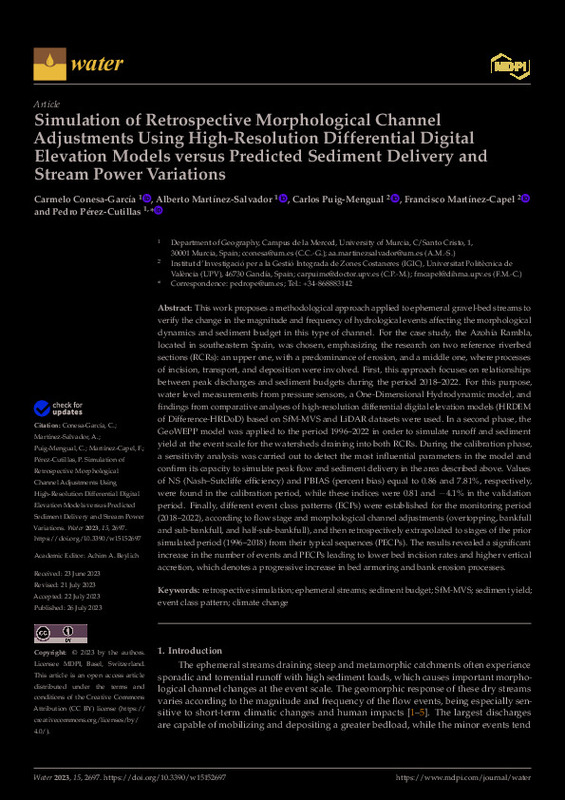JavaScript is disabled for your browser. Some features of this site may not work without it.
Buscar en RiuNet
Listar
Mi cuenta
Estadísticas
Ayuda RiuNet
Admin. UPV
Simulation of retrospective morphological channel adjustments using high-resolution differential digital elevation models versus predicted sediment delivery and stream power variations
Mostrar el registro completo del ítem
Conesa-García, C.; Martínez-Salvador, A.; Puig-Mengual, C.; Martinez-Capel, F.; Pérez-Cutillas, P. (2023). Simulation of retrospective morphological channel adjustments using high-resolution differential digital elevation models versus predicted sediment delivery and stream power variations. Water. 15(15):1-35. https://doi.org/10.3390/w15152697
Por favor, use este identificador para citar o enlazar este ítem: http://hdl.handle.net/10251/201746
Ficheros en el ítem
Metadatos del ítem
| Título: | Simulation of retrospective morphological channel adjustments using high-resolution differential digital elevation models versus predicted sediment delivery and stream power variations | |
| Autor: | Conesa-García, Carmelo Martínez-Salvador, Alberto Puig-Mengual, Carlos Pérez-Cutillas, Pedro | |
| Entidad UPV: |
|
|
| Fecha difusión: |
|
|
| Resumen: |
[EN] This work proposes a methodological approach applied to ephemeral gravel-bed streams to verify the change in the magnitude and frequency of hydrological events affecting the morphological dynamics and sediment budget ...[+]
|
|
| Palabras clave: |
|
|
| Derechos de uso: | Reconocimiento (by) | |
| Fuente: |
|
|
| DOI: |
|
|
| Editorial: |
|
|
| Versión del editor: | https://doi.org/10.3390/w15152697 | |
| Código del Proyecto: |
|
|
| Agradecimientos: |
This research was funded by ERDF/Spanish Ministry of Science, Innovation and Universities-State Research Agency (AEI)/Project CGL2017-84625-C2-1-R. State Program for Research, Develop-ment and Innovation focused on the ...[+]
|
|
| Tipo: |
|









